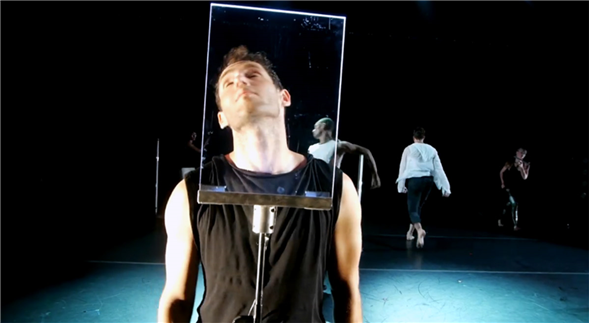Translate Page

Susan Marshall has seen us dancing, and she wants to know more
---
Although she's an established creator in the contemporary dance scene, Susan Marshall recently found herself intrigued by the way people dance when they're just having fun. "I was interested in the way popular dance and rock music function in our lives---the roles they serve and our relation to them in our emotional lives and identity," she says.
The result of her exploration is Play/Pause, which has its New York premiere this Wednesday-Saturday as part of BAM's Next Wave Festival. With an original score by David Lang, performed live by three musicians, the work poses intriguing questions about the reasons we dance when we're not in front of an audience. Marshall says the piece investigates "how the [personal] experience of dance is very different from how we approach it as something that we watch. I'm drawn to its power, its rhythm, and the way it can provide a kind of catharsis for whatever excess of emotions we're experiencing in our lives."
She continues, "I think I was a little frustrated with the separation between the very omnipresent, popular social-dance world and our little niche of the dance world. And [I was] wanting to cross that line myself."
Marshall's works tend to pulsate with urgency, evoking an intensely specific world where a great deal is at stake. As the cast of six---one of whom has training primarily as an actor---rehearse Play/Pause in a midtown studio, some sections incorporate detailed, meticulous gestures, as well as whiplash movement and evocations of club dancing. Microphones are prominent props; a performer uses one to trace circles on a plywood wall, creating harsh sounds; another holds one close to amplify the steady, deliberate rhythm of his breath. Dancers shout out counts; later they pose and dance behind panes of glass---protected, and yet exposed.
"I'm interested in using sounds to amplify visual material, so the dancers often create sound," Marshall says.
Luke Miller, a veteran of Marshall pieces like the Bessie Award-winning Cloudless, attests to the dancers' role in shaping the work. "We're wrestling with the same ideas that she's wrestling with in the studio, so we get to help her figure those things out," he says. "It's not just a company where you come in and learn the movement."
Play/Pause which has been gestating for two years, has recently toured to major stages in Chicago, Los Angeles, and Washington D. C. As the work has come into focus, it has evolved away from an earlier concept relating more specifically to music videos. "Often where I start a work and where the work finishes are only distant cousins," Marshall says. "So much of the original investigation of this piece fell away during the process of creating it. It does remain, but not as a central pivotal concern. I think this piece is more about my own reconnection to dance and what it feels like to dance to music. And how dancing to music is a way of having permission to feel."
---
Susan Reiter is a freelance arts journalist who contributes to the Los Angeles Times, Playbill, Dance Magazine and other publications
Still taken from Susan Marshall & Company's YouTube preview of the piece (embedded above)